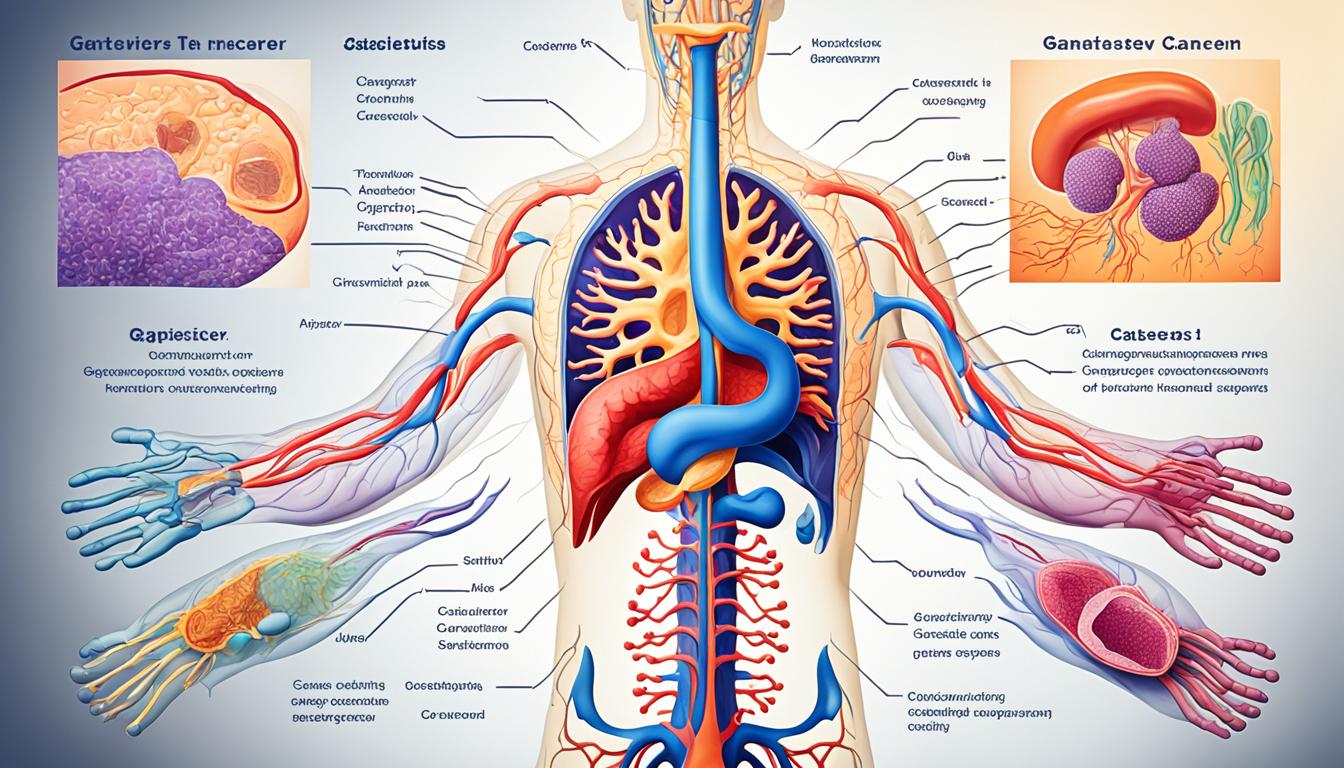Gastric cancer, or stomach cancer, is a dangerous tumor in the stomach’s lining cells. It ranks fifth among all cancers globally. Moreover, it’s the third most fatal cancer type. Major causes include Helicobacter pylori infection, a salty diet, smoking, and family history of the disease.
Common signs of gastric cancer are stomach pain, sudden weight loss, not feeling hungry, and feeling sick. Finding blood in bowel movements is another possible symptom. To confirm the disease, doctors use tools like endoscopy and CT scans. They also take a small tissue sample for a biopsy.
Current treatments for gastric cancer involve surgery, chemotherapy, and radiation. A newer method showing promise is stem cell therapy. This method aims to kill the cancer’s main builders, the cancer stem cells. If successful, it could be a significant step forward in fighting stomach cancer.
Key Takeaways:
- Gastric cancer is a type of stomach cancer marked by a dangerous tumor in stomach lining cells.
- Its prime risk factors are Helicobacter pylori infection, certain dietary habits, smoking, and a family history.
- Look out for symptoms like stomach pain, sudden weight loss, not feeling hungry, and noticing blood in your stool.
- To diagnose, expect imaging tests and a biopsy that looks for cancer cells.
- Treatments range from surgery and chemo to new options like stem cell therapy.
Risk Factors and Epidemiology of Gastric Cancer
The bacteria Helicobacter pylori is a key cause of gastric cancer, linked to over 70% of cases. Eating lots of salted, smoked, or pickled foods and smoking also raise your risk. Plus, if your family has a history of gastric cancer, or you carry certain genetic mutations, you’re more likely to get it.
This cancer is found mostly in older men. The average age at diagnosis is 68. Rates vary around the world. But, places like Japan and South Korea have the most cases. In North America, it’s not as common.
Gastric cancer has been getting less common due to better hygiene, less salty foods, and using antibiotics to fight Helicobacter pylori. Yet, it’s still a big health issue. Knowing the risks and where it’s most common helps with early detection and treatment.
Epidemiology of Gastric Cancer
Here’s a look at how often gastric cancer occurs in different parts of the world:
| Region | Incidence Rate (per 100,000) |
|---|---|
| Eastern Asia | 10-100 |
| Eastern Europe | 10-40 |
| Western Europe | 5-20 |
| North America | 3-10 |
Gastric cancer is still a big concern in places where people often get Helicobacter pylori. It’s key to know the risks and facts about gastric cancer for better prevention and treatment.
Innovative Stem Cell Therapy for Gastric Cancer
Stem cell therapy is a new hope for gastric cancer treatment. It aims to fight stomach cancer’s cells at their core. Regular treatments like surgery and chemo sometimes can’t fully get rid of cancer cells. This is because they often miss the cancer stem cells.
Researchers hope that stem cells can change this. They plan to target and destroy cancer stem cells with them. Stem cells are special because they can keep making more stem cells. Or, they can become different kinds of cells. This makes them perfect for aiming at cancer.
Early studies in labs have given us hope. They show that stem cell therapy can block the ways cancer cells grow and survive. But, we still need more studies to make these treatments better and safer. This method could completely change how we fight gastric cancer. But, lots of careful tests are still needed to make sure it’s safe and really works well.

